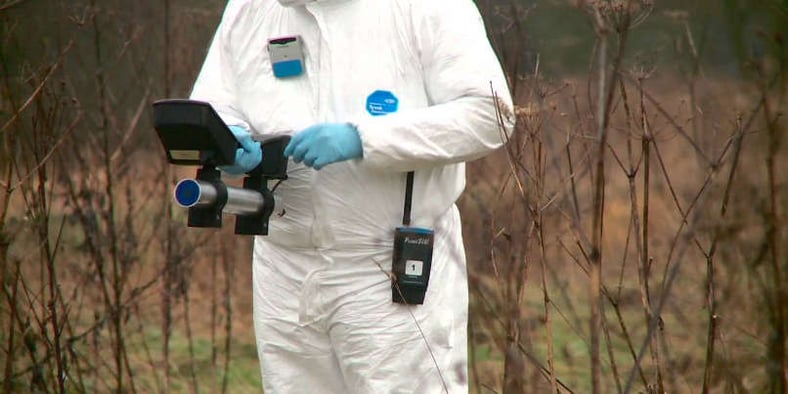
A key objective of radiation safety training emergency preparedness is the ability for military personnel and first responders to be able to identify, evaluate and react to a wide spectrum of potentially hazardous events.For those tasked with handling the unique challenges of radiological incidents, the importance of maintaining personal safety is paramount.
Radiation is an invisible force that is constantly around us. It takes the form of natural radiation (such as radioactive radon gases, terrestrial gamma radiation or cosmic radiation) and is also a by-product of man-made radioactive materials (as a result of medical radiotherapy procedures, occupational radiation exposure or radioactive discharges) some of which can be immensely powerful.
Exposure to radiation is defined as being when part, or all, of the body is irradiated with radioactive material. This radiation may be deposited externally (ie by direct contact with skin or clothing) or internally (through the process of inhalation, ingestion or via a wound.)
The effect of radiation on human tissue varies depending on the radiation type. Alpha particles for example are the least dangerous in terms of external exposure but extremely hazardous if inhaled or ingested. The effects from beta radiation or gamma radiation exposure on the other hand are less dangerous internally, but pose a much greater risk externally as they can penetrate the skin and damage the cells inside.
On average, US civilians are exposed to an annual radiation dose of approximately 620 millirem (6.2 millisieverts) while in the UK the dose is estimated at approximately 270 millirem (2.7 millisieverts) per year. Both levels fall well within what are considered safe parameters for individual radiation exposure.
For military personnel or first responders however, whose job it is to react to a range of hazardous radiological incidents, the potential for exposure to high levels of ionising radiation poses a much greater risk.
An understanding of personal radiation levels is therefore essential for anyone working in a first repsonse role within the area of radiation safety.
Personal dosimeters for radiation safety training
One of the key life-saving items of instrumentation provided to military personnel and first responders during a radiation safety incident is a personal dosimeter which enables them to monitor their own individual dose of ionising radiation.
Personal dosimeters can be worn to obtain a whole body dose and there are also specialist types that can be worn on the fingers or clipped to headgear, to measure the localised body irradiation for specific activities.
A personal dosimeter is a fairly straight-forward piece of instrumentation to use, however as health and safety regulations restrict the use of a live ionising radiation source during training scenarios, it is impossible for trainees to fully experience any authentic readings on their detectors and understand the importance of readings and alarms.
One solution is to introduce the use of a dosimeter simulator into radiation safety training.
A dosimeter simulator, such as Argon’s EPD Mk2 SIM, is a training device that enables students to experience every operational feature of an actual EPD Mk2 dosimeter, but without the need for an ionizing radiation source.
A dosimeter simulator offers some distinct advantages for trainees:
- It responds to an electronic source that simulates the effects of life-threatening ionising radiation levels but with zero risk to the trainees, instructors or environment
- The SIM authentically replicates the appearance, functionality and display of a real device to enables trainees to experience every operational feature
- The simulator indicates HP07 and HP10 dose, including first and second alarms when the dose rate reaches a preset level
- The simulation sources can be used anywhere, including public buildings
- The simulator runs on the same battery supply as a real dosimeter
- The devices require no preventative maintenance or recalibration
- The use of a simulator avoids unnecessary and expensive damage to actual detectors
- The simulator dosimeter is fully compatible with Argon’s PlumeSIM System to be used as part of wide area tactical field and nuclear emergency response exercises
Understanding radiation exposure
Regular training using a simulator dosimeter can also be invaluable in enabling trainees to experience and understand three key factors that will determine their individual radiation exposure and the actions they can take to reduce this:
Time: The longer the exposure to radiation, the bigger the dose will be - and any reduction in the time of an exposure will reduce the effective dose proportionally.
Distance: Any increase in the distance from a radioactive source automatically reduces the dose due to the inverse square law (ie that a specified physical quantity or intensity is inversely proportional to the square of the distance from the source of that physical quantity.
Shielding: Solid or liquid materials such as lead, concrete and water can all act as shields to absorb the energy of the radiation. Inserting the proper shield between a person and a radiation source will greatly reduce, or in some cases even eliminate, the dose received.
Hands on learning, using life-like instrumentation, is a key contributor to the effectiveness of radiation safety training exercises.
The provision of life-like simulator detectors, and being given repeated opportunity to use them in a range of realistic training scenarios, is invaluable in ensuring that military personnel and first responders are equipped to handle the unique challenges of any radiological incident they may encounter.
